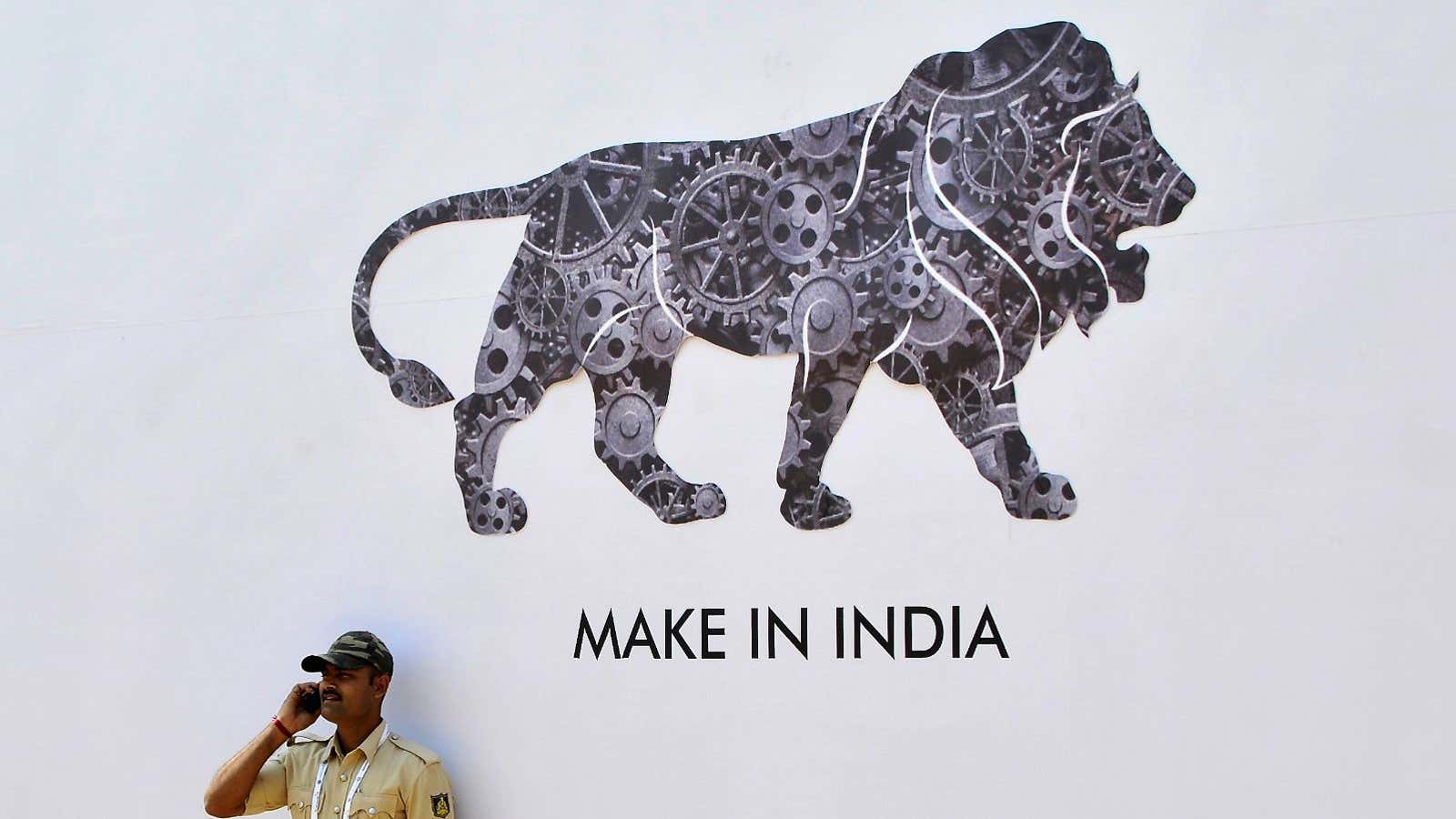Prime minister Narendra Modi’s “Make in India” initiative can transform India’s economy—but only if a range of hugely contentious and politically sensitive issues like land acquisition and labour laws reforms are properly dealt with.
While Modi will need to demonstrate significant political resolve and acumen to push through these sensitive reforms, finance minister Arun Jaitley can, in the meantime, push through a few strategic and focussed initiatives with relative ease and without any meaningful opposition. These include:
- Slash red tape on approvals and consents. While a large part of this responsibility rests with state governments, the central government can lead the way by example and deal with the areas that lie within its domain, such as environmental clearances
- Aggregate land banks and encourage investments in industrial parks and cities. Once again, while the primary responsibility lies with state governments, appropriate fiscal incentives should be provided
- Skill creation is essential to develop a labour force that will fuel manufacturing. The nascent plan to roll out skill development centres should be activated
- Abolish and/or modernise archaic laws, since their continuation on the statute books leads to an uncertain business environment. The obvious candidates are labour laws, land conversion laws and bankruptcy laws
On a larger canvas, Modi’s “Make in India” can only deliver if the acute infrastructure challenges currently faced by India, are addressed expeditiously.
Success of the manufacturing sector is inextricably dependent on creation of the entire support ecosystem of services, logistics, technology and skilled labour, all of which require robust, modern and efficient infrastructure ranging from power, roads, ports, transportation, industrial parks, to skill development centres, health and education.
But the biggest hurdle for building such critical infrastructure is raising capital for financing these projects.
To put things in perspective, the current five year plan estimates $1 trillion worth of investments in infrastructure. On a thumb rule basis of a 70:30 debt to equity ratio, around $330 billion of equity needs to be raised to finance this programme.
Compare this to the aggregate investment (including debt and equity) of $330 billion made in the previous five year plan.
For Indian corporates, burdened with stretched balance sheets and debt, infrastructure projects with long gestation periods also require the right mix of capital structure. For cost of capital to be optimum, Indian companies need access to credit at globally competitive rates. That’s why liberalisation of external commercial borrowing for infrastructure projects is essential.
To bridge the gap between infrastructure finance and capital markets, here are four measures that finance minister Jaitley’s budget can introduce:
- Long-term infrastructure financing needs natural long term institutional investors like the pension funds and insurance companies, who seek diversified assets to match long term liabilities. However, the scope of investment by these kinds of institutional investors are limited by regulations. Insurance companies have an estimated $300 billion of cash to put to work while pension funds have an addition $30 billion. There is a need to revisit the investment guidelines of institutional investors and restrictions needs to be relaxed. The Insurance Regulatory and Development Authority of India (IRDA) and the Pension Fund Regulatory and Development Authority’s investment guidelines should be reviewed.
- To finance urban infrastructure, municipal bonds issued by Urban Local Bodies (ULBs) could be an important source of financing. ULBs issuances (around 25 since 1997) are, so far, miniscule. The municipal bond market needs to be developed by providing an enabling regulatory framework, efficient procedures and appropriate tax incentives.
- Suitable mechanism for credit enhancement to enable corporates with lower credit rating to access the bond market. Some structure for partial credit enhancement could be considered like the Asian Development Bank’s (ADB) first-of-a-kind $128 million facility developed with the India Infrastructure Finance Company. Under this, ADB and domestic finance companies will provide partial guarantee on rupee-denominated bond issued by Indian companies to finance infrastructure projects. This will boost credit rating of a typical infrastructure project from BBB– or A to AA.
- Create an enabling regulatory framework that offers efficient and inexpensive procedures, including the stamp duty regime, to develop the corporate and municipal bond market.
